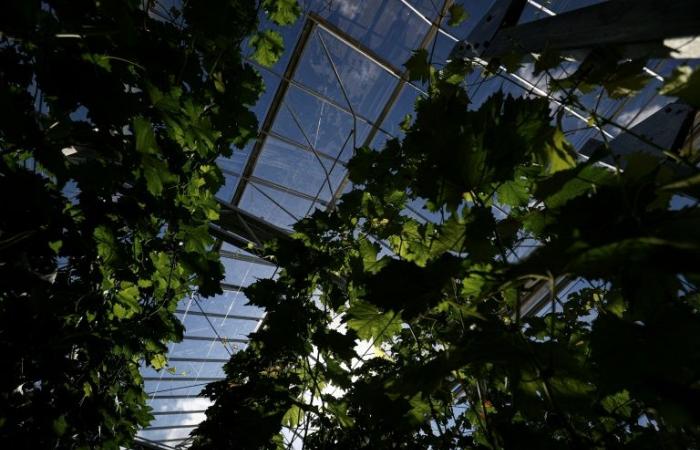
In an insect-tight greenhouse with an almost tropical atmosphere, Cabernet Franc or Sauvignon plants grow one meter from the ground on rock wool, foreshadowing the future of the vine.
This 800 square meter glass structure located on a plot of the Blanquefort wine high school, in the Bordeaux metropolitan area, serves as a demonstrator to accelerate the production of vine plants while securing it from a health point of view.
“We have never produced in these conditions,” says David Amblevert, president of the French Wine Nursery Federation and secretary of the Gironde Chamber of Agriculture which is leading the project as part of the Vinopôle Bordeaux-Aquitaine, with the financial aid from the Region in particular.
Here, everything is controlled: temperature, humidity, sunshine, ventilation… Greenhouse grower Agnès Lainé watches over some 2,200 plants arriving at the end of June from the French Institute of Vine and Wine in Grau-du-Roi (Gard) on a daily basis. , which provides the “initial material” in a very supervised production chain.
The pots of Merlot or Colombard, which sit alongside varietal creations like Voltis or Floreal, have grown since then – up to several meters – thanks to fertigation which provides them with water and nutrients, in learned doses administered by a network of valves, pumps and pipes.
ppy/gf/or
“There are probes everywhere but nothing replaces eyes and fingers. Every day you have to be there,” emphasizes the technician, triggering the opening of the upper part of the greenhouse, to ventilate it. a fan equipped with a net because nothing should enter.
– A turning point –
At a time when phytosanitary products are being reduced, this confined installation makes it possible to protect rootstocks and grafts (here in the “pre-multiplication” phase, intended for nursery growers) from diseases transmitted by insects. Such as golden flavescence, caused by the leafhopper, or that caused by a bacteria, xylella fastidiosa, a strain of which attacks the vine.
Above-ground greenhouse cultivation aims to halve the production time of a vine plant compared to the current process. And thus gain in responsiveness to meet the needs of a wine industry disrupted by the effects of climate change, to which it is trying to respond by developing more adapted and resistant grape varieties.
The objective is to produce, under these optimal conditions, up to 100,000 grafts and 100,000 rootstocks per year.
“We still have a lot to learn,” notes Laurent Bernos, director of the viticulture-oenology center at the Gironde Chamber of Agriculture, who notes “very different behaviors” between the plants in the greenhouse. “But in three months, none have punctured, the first objective has been fulfilled,” he smiles.
At a cost of two million euros, the Gironde installation, a small part of which is devoted to the cognac vineyard in Charente, the rest to Bordeaux and other Aquitaine vineyards, is destined to be enlarged or moved to the horizon 2026.
A similar project, called Qanopée, saw the light of day near Épernay (Marne) with a greenhouse dedicated to Champagne, Burgundy, Jura and Beaujolais grape varieties. Others are planned in the Loire Valley and Occitanie to turn a page on the country’s viticulture.
Do you have a real estate project in mind? Yakeey & Médias24 help you make it happen!





